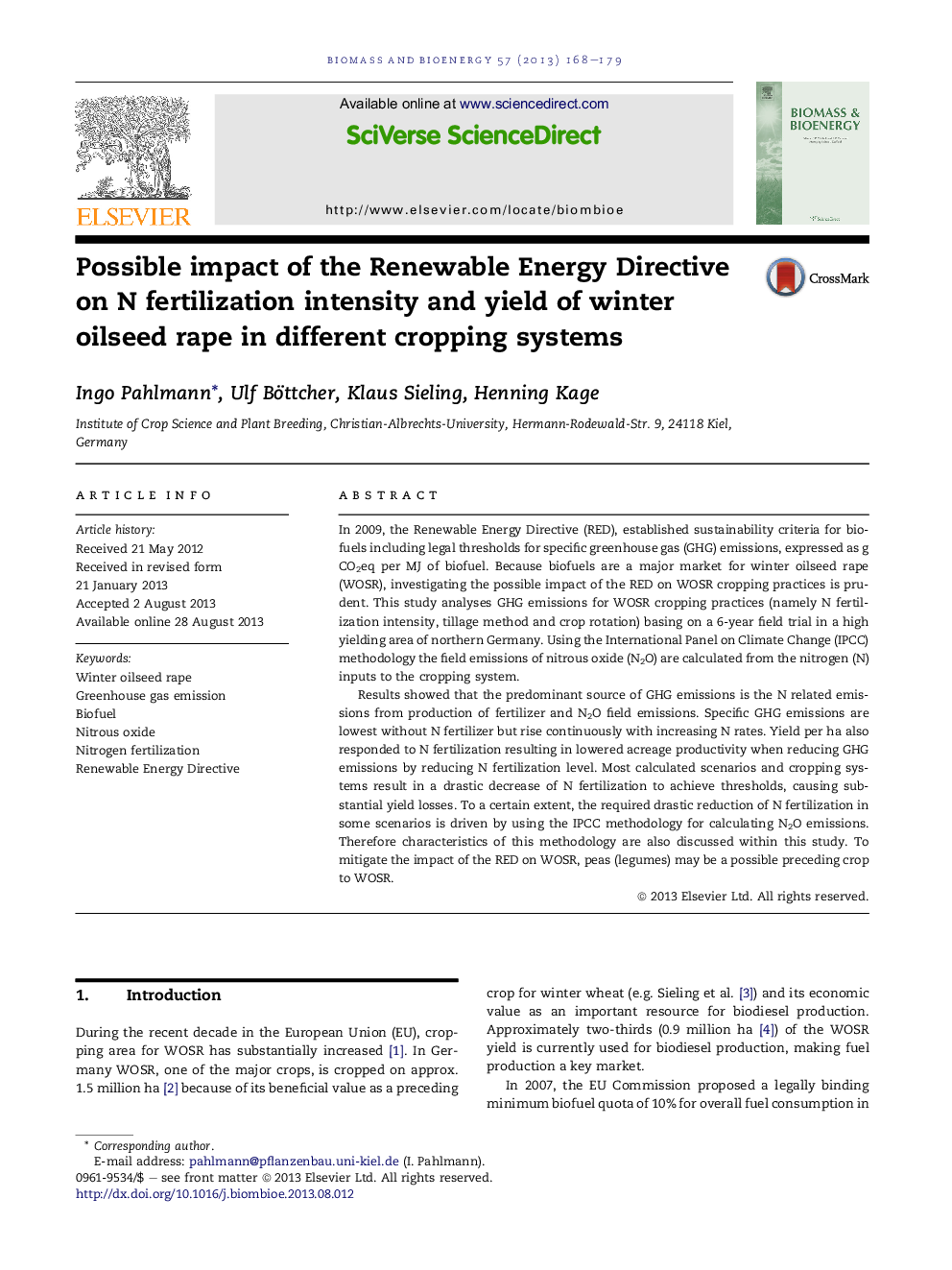| کد مقاله | کد نشریه | سال انتشار | مقاله انگلیسی | نسخه تمام متن |
|---|---|---|---|---|
| 676989 | 1459836 | 2013 | 12 صفحه PDF | دانلود رایگان |

• Greenhouse gas emissions (GHG) were calculated for varying cropping systems.
• Specific GHG emissions rise continuously with increasing N fertilization.
• The impact of the Renewable Energy Directive was evaluated in a scenario analysis.
• Most calculation scenarios require a substantial reduction of N fertilization.
• Low N fertilization results in drastic yield losses and low acreage productivity.
In 2009, the Renewable Energy Directive (RED), established sustainability criteria for biofuels including legal thresholds for specific greenhouse gas (GHG) emissions, expressed as g CO2eq per MJ of biofuel. Because biofuels are a major market for winter oilseed rape (WOSR), investigating the possible impact of the RED on WOSR cropping practices is prudent. This study analyses GHG emissions for WOSR cropping practices (namely N fertilization intensity, tillage method and crop rotation) basing on a 6-year field trial in a high yielding area of northern Germany. Using the International Panel on Climate Change (IPCC) methodology the field emissions of nitrous oxide (N2O) are calculated from the nitrogen (N) inputs to the cropping system.Results showed that the predominant source of GHG emissions is the N related emissions from production of fertilizer and N2O field emissions. Specific GHG emissions are lowest without N fertilizer but rise continuously with increasing N rates. Yield per ha also responded to N fertilization resulting in lowered acreage productivity when reducing GHG emissions by reducing N fertilization level. Most calculated scenarios and cropping systems result in a drastic decrease of N fertilization to achieve thresholds, causing substantial yield losses. To a certain extent, the required drastic reduction of N fertilization in some scenarios is driven by using the IPCC methodology for calculating N2O emissions. Therefore characteristics of this methodology are also discussed within this study. To mitigate the impact of the RED on WOSR, peas (legumes) may be a possible preceding crop to WOSR.
Journal: Biomass and Bioenergy - Volume 57, October 2013, Pages 168–179